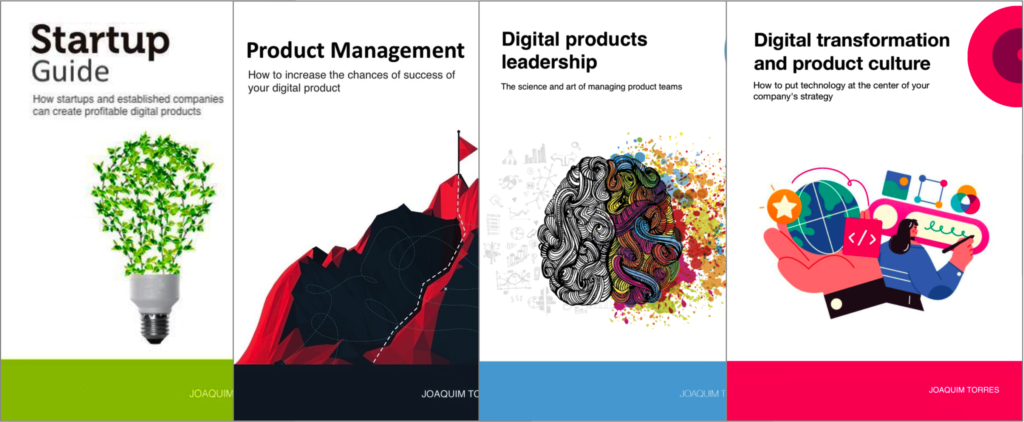
Your North Star Shouldn’t Be a Metric — It Should Be a Destination
22 de July, 2025
AI Is Not Just About Productivity
23 de September, 2025In recent weeks, the topic of product leadership archetypes has gained attention. In a conversation with Christian Idiodi on the August 21st episode of the Product Therapy podcast, Shreyas Doshi presented three leadership styles: the craftsperson, the operator, and the visionary. A few days later, on August 27th, Marty Cagan reflected on the same topic in an article on SVPG.
Both are excellent resources for understanding what makes strong product leadership. They explain what these archetypes are, how a leader might lean more toward one or another, why craft is the foundation for any product leader, and how we should use each of these abilities depending on context.
However, as someone who loves reading and writing, I felt some discomfort with the word archetype. The term can create the false impression that leaders are defined by a single type, almost like an unchanging stamp.
In practice, product leadership is far more dynamic. A good leader must recognize their natural preference, but also cultivate strengths across all three areas to be effective in different contexts.
The limitations of the word “archetype”
The word archetype carries two limiting interpretations:
- Archetype is unique – as if one must choose to be a visionary, a craftsperson, or an operator, and that’s it. Even though Shreyas, Christian, and Marty explicitly argue otherwise, the word still carries the sense that we are either one or the other.
- Archetype is definitive – as if each person has a fixed type, with no room for conscious evolution. Again, Shreyas, Christian, and Marty emphasize the need for growth, for developing the skills we lack, yet the term archetype suggests a definitive stamp, discouraging progress.
This interpretation risks making leaders complacent with what they already do well, companies prone to hiring the same profiles repeatedly, and teams unbalanced.
Shreyas suggests using the metaphor of “hats” as an alternative, but that too has limitations: we usually wear only one hat at a time, while product leaders often need to use multiple skills simultaneously. And hats don’t evolve either.
The dimensions of product leadership
Throughout my career, I’ve found it necessary to utilize skills from different archetypes simultaneously, and I’ve always sought to develop the leadership abilities where I was falling short.
That’s why I prefer to think of these skills not as archetypes, but as dimensions of product leadership:
- Craft dimension: depth in understanding customers, problems, and solutions.
- Vision dimension: ability to see the future and inspire with a clear direction.
- Execution dimension: ability to scale teams, structure healthy processes, manage stakeholders, and develop people.
By seeing them as dimensions:
- We recognize that everyone has natural preferences, but can expand beyond them.
- We gain a continuous development agenda: identifying strengths and growth areas.
- We frame leadership as adaptive to context: different stages of the company and product demand different emphases.
Conclusion
Both Marty Cagan’s article and Shreyas Doshi’s conversation with Christian Idiodi are valuable contributions to the discussion of product leadership. They help us identify preferences, superpowers, and the contexts in which each style is most effective.
My goal is not to disagree, but to complement: instead of fixed archetypes, let’s think in terms of dimensions of product leadership. Each leader has a natural preference, but effectiveness comes from balancing craft, vision, and execution according to context — and evolving the skills where we are weakest, so we can grow into more complete, and ultimately better, leaders.
Workshops, coaching, and advisory services
I’ve been helping companies and their leaders (CPOs, heads of product, CTOs, CEOs, tech founders, and heads of digital transformation) bridge the gap between business and technology through workshops, coaching, and advisory services on product management and digital transformation.
Digital Product Management Books
Do you work with digital products? Do you want to know more about managing a digital product to increase its chances of success, solve its user’s problems, and achieve the company objectives? Check out my Digital Product Management books, where I share what I learned during my 30+ years of experience in creating and managing digital products:
- Digital transformation and product culture: How to put technology at the center of your company’s strategy
- Leading Product Development: The art and science of managing product teams
- Product Management: How to increase the chances of success of your digital product
- Startup Guide: How startups and established companies can create profitable digital products

